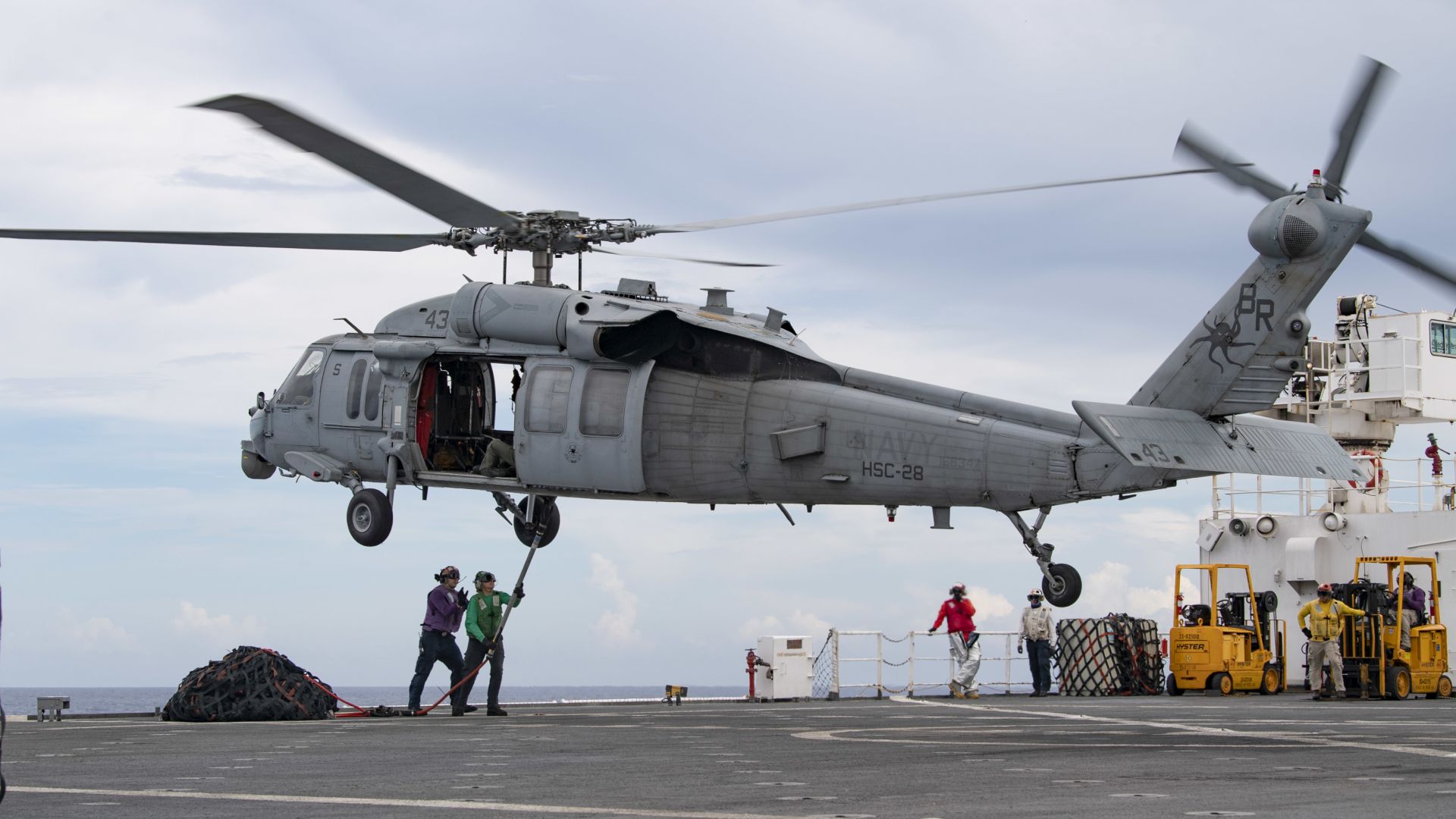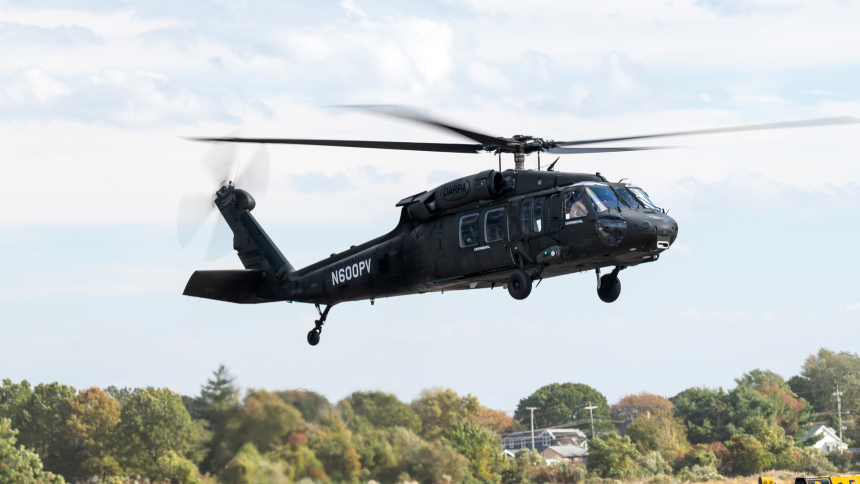Checking Out the Background and Advancement of the UH 60 Helicopter

Beginnings of the UH-60
The beginnings of the UH-60 helicopter can be mapped back to the late 1960s, a period marked by the demand for a versatile energy aircraft that could adjust to the developing needs of modern warfare. The U.S. Military identified the necessity for a replacement for the older UH-1 Iroquois, which was ending up being progressively poor for the complexities of contemporary battle situations. In 1967, the Military started the Energy Tactical Transportation Airplane System (UTTAS) program, which looked for to create a multi-role helicopter efficient in various objectives, consisting of army transportation, clinical discharge, and logistical support.
The style competitors attracted a number of aerospace manufacturers, but it was Sikorsky Aircraft Firm that ultimately secured the agreement in 1972. The UH-60 Black Hawk was introduced, showcasing innovative design components and advanced modern technology that set it aside from its predecessors. Its initial flight took place in 1974, and the airplane was officially embraced by the Army in 1979. The UH-60 swiftly obtained acknowledgment for its robust performance, reliability, and flexibility, leading the method for its comprehensive use in army procedures and solidifying its status as a keystone of U.S. Army aeronautics.
Key Style Features
Ingenious design features of the UH-60 Black Hawk dramatically add to its functional efficiency. One of one of the most significant aspects is its twin-engine arrangement, which enhances dependability and supplies a higher power-to-weight ratio, making it possible for the helicopter to execute under numerous problems. The aircraft's four-blade primary blades system provides boosted lift and maneuverability, vital for tactical goals.

Additionally, the cabin is developed for optimum exposure and ergonomics, including advanced avionics that enhance pilot operations. The modular layout of the UH-60 enables simple maintenance and flexibility, making it suitable for different mission accounts, from troop transport to medevac procedures. These crucial style functions ensure that the UH-60 Black Hawk continues to be a trusted and flexible asset in armed forces aviation, with the ability of meeting the demands of contemporary war.
Technical Advancements
Current technical advancements in the UH-60 Black Hawk have substantially boosted its operational abilities and convenience. The integration of advanced avionics, such as digital flight basics control systems and improved situational recognition display screens, allows pilots to operate with enhanced accuracy and performance. These systems facilitate improved advice navigation, communication, and data sharing, allowing the helicopter to work properly in varied environments.
Additionally, the introduction of composite materials has decreased the general weight of the aircraft while preserving structural stability. This decrease improves gas performance and extends operational array. The incorporation of advanced rotor technology, including the use of four-blade, completely verbalized blades systems, has actually enhanced lift efficiency and ability to move, allowing for better handling in different flight conditions.

Additionally, advancements in propulsion systems, such as the T700-GE-701D engines, have actually increased power result and dependability - uh 60. These engines add to exceptional performance in hot-weather and high-altitude conditions
Lastly, the integration of self-defense systems and boosted sensor bundles improves the Black Hawk's survivability and objective effectiveness. Jointly, these technical improvements guarantee that the UH-60 Black Hawk remains a vital property in modern-day air travel, efficient in adjusting to the evolving needs of humanitarian and military goals.
Function in Military Procedures
As the backbone of united state Military aviation, the UH-60 helicopter plays a vital role in numerous military procedures, acting as a functional platform for combat assistance, transportation, and medevac goals - uh 60. Its style incorporates the ability to operate in varied environments, making it crucial for troop activity and logistical support in both unconventional and standard warfare

In clinical emptying circumstances, the UH-60 has shown invaluable, dramatically decreasing the time to move damaged soldiers from the field of battle to medical facilities. Its innovative avionics and night vision capabilities better make sure mission success under tough problems. In general, the UH-60 helicopter continues to be an essential possession, continuously adjusting to satisfy the evolving needs of army operations and boosting the efficiency of united state pressures worldwide.
Future of the UH-60
Looking ahead, the future of the UH-60 helicopter entails considerable improvements in innovation and capabilities created to enhance its operational performance. As armed forces procedures develop, the UH-60 is anticipated to incorporate sophisticated innovations, consisting of improved avionics, improved tools systems, and advanced interaction devices. These enhancements will certainly allow for higher situational recognition and mission versatility, ensuring that the UH-60 stays an essential asset on the field of battle.
One notable advancement is the assimilation of fly-by-wire systems, which will certainly improve flight control accuracy and lower pilot workload. Efforts to upgrade the airframe and engines aim to enhance rate, haul, and array ability, thereby expanding the helicopter's operational scope.
The future also holds guarantee for enhanced interoperability with unmanned aerial systems (UAS), allowing collaborated objectives that take advantage of both manned and unmanned abilities. Furthermore, the consolidation of man-made intelligence and artificial intelligence might enhance flight dynamics and maintenance procedures, bring about minimized operational costs.
Conclusion
The UH-60 Black Hawk helicopter stands for a substantial success in army air travel, developing from the U.S. Military's first demands for a versatile energy airplane. Its innovative layout attributes and constant technical improvements have ensured its significance in numerous armed forces procedures over the years. As the needs of contemporary warfare change, the future of the UH-60 will likely entail additional enhancements and adjustments, reinforcing its standing as a crucial asset for militaries worldwide.
The UH-60 Black Hawk helicopter stands for a significant landmark in armed forces aeronautics, emerging from the United state Army's pursuit for a much more versatile and dependable energy aircraft in the late 20th century.The beginnings of the UH-60 helicopter can be traced back to the late 1960s, a duration marked by the requirement for a versatile utility airplane that might adjust to the developing needs of modern war. Overall, the UH-60 helicopter stays an essential possession, continually adapting to satisfy the advancing demands of armed forces procedures and enhancing the efficiency of United state forces worldwide.
Looking ahead, the future of the UH-60 helicopter entails significant improvements in modern technology and capabilities created to boost its operational efficiency.The UH-60 Black Hawk helicopter stands for a substantial achievement in armed forces air travel, advancing from the U.S. Army's preliminary needs for a versatile utility aircraft.